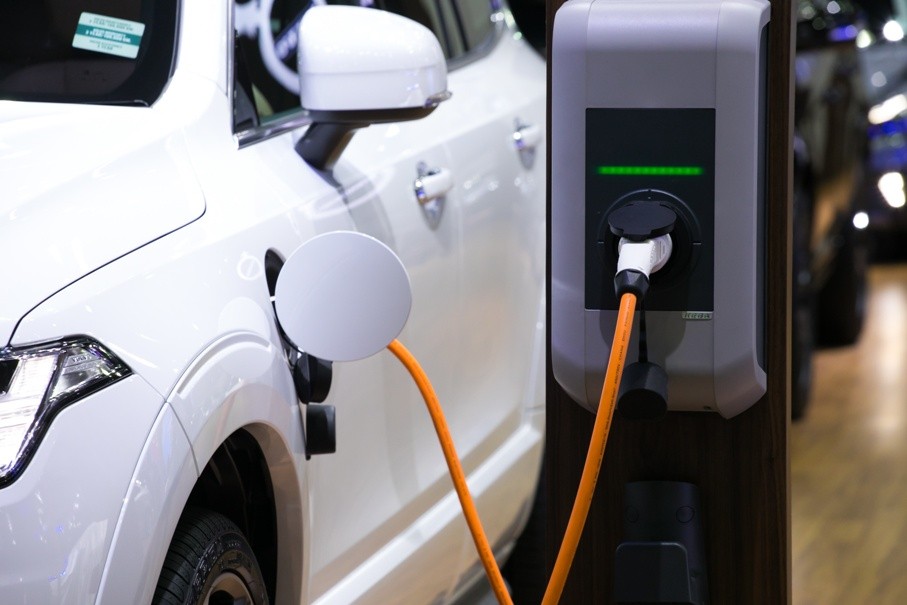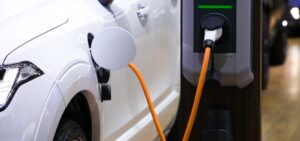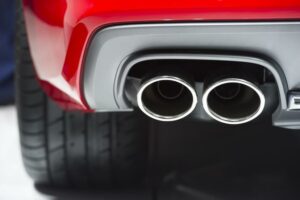As consumers become more eco-conscious, hybrid and fuel-efficient car sales continue to increase. Features such as electric motors for fuel economy and smaller gasoline engines for power bring with them the promise of greener driving.
These new vehicles are not without their negative environmental impacts, though. As consumers gain increased awareness about the ecological effects that vehicles and their parts have on the planet, a new shift in attention towards the subject of hybrid batteries has occurred.
While hybrid cars get better fuel economy and burn less gasoline, their batteries contain toxic chemical materials. Some versions prove more toxic than others, and there are also significant performance differences.
Keep reading for our guide to hybrid car battery composition, their evolution in recent years, and the future of green auto technology.
Understanding Hybrid Technologies
Before comparing hybrid vehicles such as the Toyota Prius and the Chevy Volt, let’s go over some basics about these vehicles. Types of hybrid technology include:
- Parallel and series hybrids
- Micro and mild hybrids
- Full hybrids
- Plug-in hybrids
As you can see from the list above, gas and electric powertrains can combine in a handful of different ways. Some of these combinations prove more efficient than others, however.
Parallel and Series Hybrids
Parallel design allows for either the gas or electric engine to drive the vehicle. Or, both engines can work in unison.
In some configurations, you’ll even see an electric motor that drives the wheels. Simultaneously, the gas engine works as a generator providing electricity for the battery as it depletes. You’ll find such systems in vehicles like the Chevy Volt and the BMW i3.
Micro and Mild Hybrids
As for micro and mild hybrids, these refer to new models with some level of electrification, such as start-stop. In these systems, larger battery packs can provide extra torque, power driver-assist, and active safety systems.
At the forefront of this technology? The 48-volt battery, which offers the fuel-efficiency of a full hybrid at a fraction of the cost. While there are no 48-volt models in North America as of yet, automakers are hoping to roll them out in the next few years.
Full Hybrids
Full hybrids refer to technology that many Americans prove familiar with. They’re powered electrically for a limited time at a gentle throttle and low speeds.
Plug-In Hybrids
Many consumers are also familiar with plug-in hybrids. These are automobiles that can be charged from the wall as electric vehicles some of the time. Their electric range usually stretches from between ten to 35 miles. After that, they switch to normal operation.
Plug-in hybrids may fall into either the parallel or series categories. Some parallel hybrids also operate as series hybrids under specific conditions to enhance efficiency.
A great example of a plug-in hybrid? The Chevrolet Volt.
In principle, it’s a series hybrid. The battery runs the electric motor to drive the wheels. Chevy likes to refer to it as the “extended-range electric vehicle,” however. In other words, short trips in the Volt are electric-only while the gas engine keeps you powered on longer journeys.
The Potentially Toxic Problem with Hybrid Cars
Consumers considering the purchase of a hybrid vehicle typically factor environmental impacts into their final decision. Hybrid cars, after all, come with many advantages, including a better overall fuel economy.
How do hybrid cars achieve this? By powering their vehicles with an electric motor that typically operates at lower speeds.
The result? Fewer trips to the gas pump.
To power these vehicles, however, manufacturers must rely on batteries made from three primary components:
- Lead-acid
- Nickel-metal hydride (NiMH)
- Lithium-ion (Li-ion)
These chemical components prove dangerous for the environment because they contain carcinogenic and corrosive materials. Questions are already being raised about the negative impacts we’ll see once landfills overflow with discarded batteries.
Is your hybrid vehicle giving you cause for concern? Don’t wait until the problem gets out of hand. Remember to have your battery checked periodically at a certified hybrid service center.
A Move in the Right Direction?
Of the three chemical ingredients listed above, the most toxic remains lead-acid. It’s also cumbersome in terms of weight, thereby reducing the fuel efficiency of hybrid vehicles. Fortunately, lead-acid is being replaced over time by nickel-metal hydride (NiMH).
While NiMH engines are less toxic, this technology comes with its own baggage. For one, mining for nickel-metal hydride is hazardous. What’s more, it’s considered a potential carcinogen.
Next, we’ve got lithium-ion (Li-ion) batteries. Considered the least toxic of the three, many predict them as the logical next step for hybrid car batteries. No wonder car companies are investing millions of dollars to make the Li-ion transition!
Their hope? The creation of hybrid car batteries that run on the same type of power that fuels MP3 players and laptops.
Nickel-Metal Hydride Versus Lithium-Ion Batteries
Fundamental to the differences between NiMH and Li-ion batteries are the materials that each cell uses to store power. Highly reactive lithium and carbon allow Li-ion batteries to save up plenty of energy.
As for NiMH batteries, they rely on hydrogen for their storing capacity. What keeps the lid on these hydrogen ions? Nickel in conjunction with another metal (often titanium).
How do they stack up when it comes to practical matters such as cost, weight, power, and durability? Let’s delve more deeply into their pros and cons.
Battery Cost
Traditionally, NiMH batteries have proven more affordable. Nonetheless, the dramatic increase in Li-ion battery production is changing this as supply continues to rise to meet demand.
Battery Weight
As for weight? NiMH batteries prove larger and heavier. For hybrid vehicles, extra weight matters.
Why? Because battery power must inevitably overcome the car’s inertia. Added weight exacerbates this process, hampering maximum mileage. As a result, lighter Li-ion battery packs with higher energy density make it easier to get a car moving.
Power Capacity
In terms of power capacity, there’s no significant difference between NiMH and Li-ion batteries. When it comes to speed of recharge, however, Li-ion cells have their NiMH counterparts beat.
Li-ion batteries also prove less susceptible to the “memory effect,” which can negatively impact a battery’s ability to store power over time.
Battery Durability
Overall, both batteries prove durable, and they’ve been tried and tested in various applications over the years. That said, NiMH batteries still ultimately perform better when it comes to durability.
What’s more, extreme temperatures (both hot and cold) can impact the endurance of some Li-ion batteries. Car manufacturers and researchers continue to work hard to develop better battery chemistry to overcome this vulnerability.
Despite these pros and cons, hybrid vehicles remain fantastic investments. When you choose a dependable car care service for your hybrid auto repair needs, you can rest assured your ride will go the distance.
Now that you’ve got a better concept of how these two battery types compare, let’s take a look at the most prevalent makes and models of hybrid vehicles on the market today. We’ll also explore the battery technology used to power them and what the future may hold.
Toyota Hybrids
Toyota has a full line of hybrid vehicles on the market. They include the:
- Corolla hybrid
- Prius
- Camry Hybrid
- Prius Prime
- Avalon Hybrid
The manufacturer boasts more than 12 million hybrid cars on the road globally, and these cars prove a profitable segment of their entire product line. Not all car manufacturers can make this claim about the profitability of their hybrid models.
When it comes to batteries, Toyota continues to use nickel-metal hydride battery cells for many of its hybrid lines.
This choice appears to put Toyota behind competitors dabbling in the Li-ion battery future. That said, the use of NiMH batteries make Toyotas more reliable in extreme weather conditions. Since Toyotas are known for their tough AWD and off-roading capabilities, sticking with NiMH tech may make more sense for the company at the moment.
The company is tentatively making the switch with some Toyota Prius hybrid batteries, however. Prius Prime uses lithium-ion batteries. Other versions of the Prius, however, still rely on nickel-metal hydride technology.
That said, NiMH batteries are about 25 percent heavier than lithium-ion ones, and they take up about 20 percent more room. As a result, Toyota can sub in either NiMH or Li-ion cells, depending on external factors such as trade tariffs, politics, and supply and demand.
Chevrolet Hybrids
Chevrolet is another manufacturer that has gotten into the hybrid vehicle game. Their hybrid models include the:
- Malibu
- Volt
Of course, you’re likely most familiar with the Chevy Volt because they’ve been on American roadways since 2011. Conceived in the mid-2000s, the Volt impressively survived General Motors’ 2009 bankruptcy, becoming a staple of the industry.
In 2019, GM announced that they would no longer be manufacturing their compact plug-in hybrid hatchbacks, much to the chagrin of loyal consumers. Over nine model years, the company sold 150,000 Volts, and so the announcement also came as a shock to many.
While GM has yet to clarify whether its Voltec-plug-in hybrid technology will grace any future vehicle models, rumors suggest the company is moving away from hybrids altogether. Instead, they’ve got their sights set on further dominating the battery-electric car scene.
Chevy Hybrid Batteries
GM started manufacturing the Li-ion hybrid car battery for the Volt in 2010. Once considered cost-prohibitive, lithium-ion batteries are now found everywhere.
The most significant advantage of Li-ion technology remains its ability to be recharged quickly. This feature remains paramount to the smooth operation of hybrid vehicles.
Honda Hybrids
Honda also manufactures a variety of hybrids. These include the:
- Accord Hybrid
- Clarity Plug-In Hybrid
- Insight
- CR-V Hybrid
In the past, Honda stuck with NiMH batteries like Toyota for its hybrids. The car manufacturer, however, has since moved to Li-ion battery packs.
That said, Honda has historically experienced problems integrating hybrid technology into its vehicles. Consumer Reports raised concerns about the reliability of their hybrid cars. The 2009 model, in particular, didn’t perform well against the competition.
Battery Issues
What have some of these problems looked like? During one 12-month period, nearly 20 percent of 2009 Honda Civic drivers had to have their Integrated Motor Assist (IMA) batteries replaced.
As for 2003, 2004, and 2010 Civic Hybrid models? They saw a ten percent replacement rate, and these replacements didn’t come cheap. The battery powering the IMA system costs anywhere from $2,000 to $4,000!
Although Honda has yet to come out in an official statement to discuss the situation with their hybrid battery, they’ve extended car warranties from ten to 11 years or 137,000 miles, and they’ve given customers who’ve already replaced their drive batteries a three-year warranty.
The company claims their batteries now last longer due to software updates. This reassurance has done little to assuage the worry of some customers, though.
How did these customers learn that battery replacement was needed? Here are some red flags that indicate it’s time to get your hybrid’s battery assessed.
Pushing the Envelope
Despite these hiccups, Honda continues to push the envelope when it comes to green cars. Besides their hybrid vehicles, you can now select a natural gas model.
The greenest of the Honda hybrids? The Civic, which relies on a 1.5-liter, four-cylinder gas engine, and a slim electric motor. This setup makes it one of the most fuel-efficient cars on the market today.
Honda is also leading the charge when it comes to the next generation of green batteries. Yet, instead of exploring more advanced lithium-ion batteries, they’re developing entirely different battery chemistry.
The result? What some are touting as the successor of the Li-ion battery.
Working with researchers at CalTech and NASA’s Jet Propulsion Lab in California, Honda published a paper in Science about new fluoride-ion batteries. These batteries have long been known for their viable chemistry, with one major caveat.
To get the ions to flow through their solid electrolyte, they must be superheated to 300 degrees Fahrenheit, a temperature out of the question for safe vehicle propulsion.
By altering the fluoride ions, however, they’ve developed a fluoride-ion battery that can produce energy at room temperature.
The cell can operate over a wide range of voltages, and they don’t pose a safety risk from overheating. Find out more about this revolutionary discovery.
Hybrid Batteries and the Future of Automotive World
Car manufacturers such as GM, Toyota, and Honda continue to innovate when it comes to hybrid batteries and greener transportation. In the process, they’ve faced both challenges and victories.
While Honda has experienced some of the most significant road bumps along the way, their new fluoride-ion battery system represents a game-changer. One set to revolutionize the future of the automotive industry.
Are you a hybrid vehicle owner? Do you need to find a reputable auto shop to handle your next tuneup or battery replacement? We can help.
Our ASE Certified technicians understand hybrid cars inside and out, and we’re ready to help you prolong the life of your eco-friendly vehicle. Contact us to set up an appointment.




